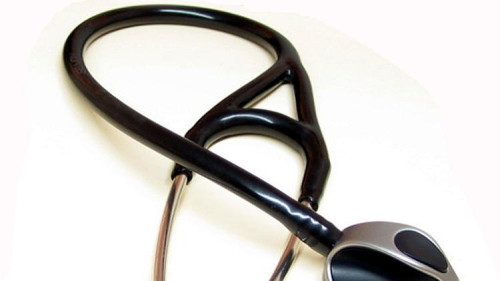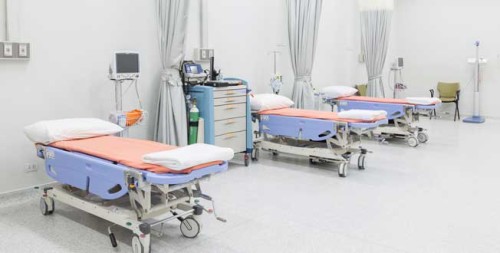Kiwi patients are being courted by the Malaysian government, which is offering low-cost cosmetic and dental surgery packages to promote itself as a medical tourism destination.
Around 2000 New Zealanders travelled to Malaysia for elective medical procedures last year, according to the Malaysia Healthcare Travel Council (MHTC), an agency established by the country’s Ministry of Health.
Malaysia attracted almost 800,000 medical tourists in 2014, and was this year proclaimed the top medical travel destination by the International Medical Travel Journal.
MHTC chief executive Sherene Azli said there had been strong interest from Kiwis in getting medical treatment while on holiday in Malaysia.
As well as cosmetic and dental procedures, weight loss surgeries were also sought-after by New Zealanders, with patients undergoing gastric bypasses, liposuction and tummy tucks.
“Knowing that there is interest in these areas, we are now becoming more active in the New Zealand market,” Azli said.
“We are working with health facilitators and travel agents based in New Zealand to start creating more awareness about Malaysian healthcare and the quality care that we have to offer.”
MHTC is aiming to boost the number of Kiwi medical tourists by 10 per cent this year through ramping up its awareness campaigns and promotions, Azli said.
In May, MHTC set up shop at the EveryWoman Expo in Auckland, offering attendees the chance to win a free makeover holiday.
But Sally Langley, president of the New Zealand Association of Plastic Surgeons, has described the marketing push as “ethically unacceptable”.
Medical tourism could not be condoned in any country because of the safety issues, with patients putting themselves at risk by getting on long-haul flights immediately before and after the surgery, she said.
It was also difficult to know if foreign surgeons, anaesthetists and nurses were registered to an appropriate standard.
Langley said the New Zealand public health system ended up bearing the brunt of botched overseas jobs.
“If you need 48 hours in hospital and one operation for an infection, that’s at least $20,000. If someone needs to be in hospital for five to 10 days, that’s probably $30,000 to $50,000 for the New Zealand taxpayer to come up with.”
Between 2010 and 2014, ACC received 178 treatment injury claims from New Zealanders who had procedures done overseas.
A treatment injury is defined as occurring during treatment provided by registered health professionals. The category used to be called “medical misadventure”.
Of those claims, 81 were accepted, costing taxpayers approximately $542,000.
The New Zealand Dental Association shared similar concerns. Former president John Boyens said there was no such thing as a “one-off” when it came to dental treatment.
“It’s not like you go over there once, have it all done and everything’s hunky dory,” he said.
“There’s always ongoing stuff that needs to be done. Don’t then complain about dentistry in New Zealand being too expensive to fix up the problems you might come back with.”
Boyens acknowledged it was natural for people to seek bargains, and high quality dentists could be found all over the world.
“From my perspective, people who go looking for cheaper dentistry overseas are simply treating it like a commodity. That’s fine, that’s their prerogative.
“I guess they’re the same kind of people who buy online rather than supporting the local industries.”
Jo Hueston of Auckland-based agency Beautiful Escapes, which arranges cosmetic and plastic surgery holidays, started offering Kuala Lumpur as a destination to her clients two years ago.
While Thailand was still more popular with New Zealanders as it was considerably cheaper, Malaysia was definitely a growing market, she said.
“One thing with Malaysia is they don’t have as many rogue surgeons as Thailand. Malaysia has gone, ‘we’re going to be very regulated’.”
The global market value for medical tourism is expected to reach US$32.5 billion (NZ$51.7b) by 2019, according to a report published by Transparency Market Research.
University of Otago associate professor of tourism Brent Lovelock, who recently researched the medical tourism experiences of New Zealanders, said demand was only expected to grow as aging populations in the western world put increased pressure on public health systems, forcing patients to seek offshore options.
This was already matched by a huge growth in supply, with hospitals “springing up overnight” in places like India, Thailand and Malaysia.
“If I had to invest, I would invest in medical tourism hospitals.”
Siobhan Downes travelled to Malaysia with the assistance of the Asia New Zealand Foundation.
Would you consider travelling to another country for surgery? Let us know in the comments?
– Stuff
source: http://www.stuff.co.nz / Taranaki Daily News Online / Stuff Home> Taranaki Daily News / by Siobhan Downes / October 21st, 2015




